Eucharistic devotions and popular spirituality
Theological Symposium International Eucharistic Congress “Fraternity to heal the world”
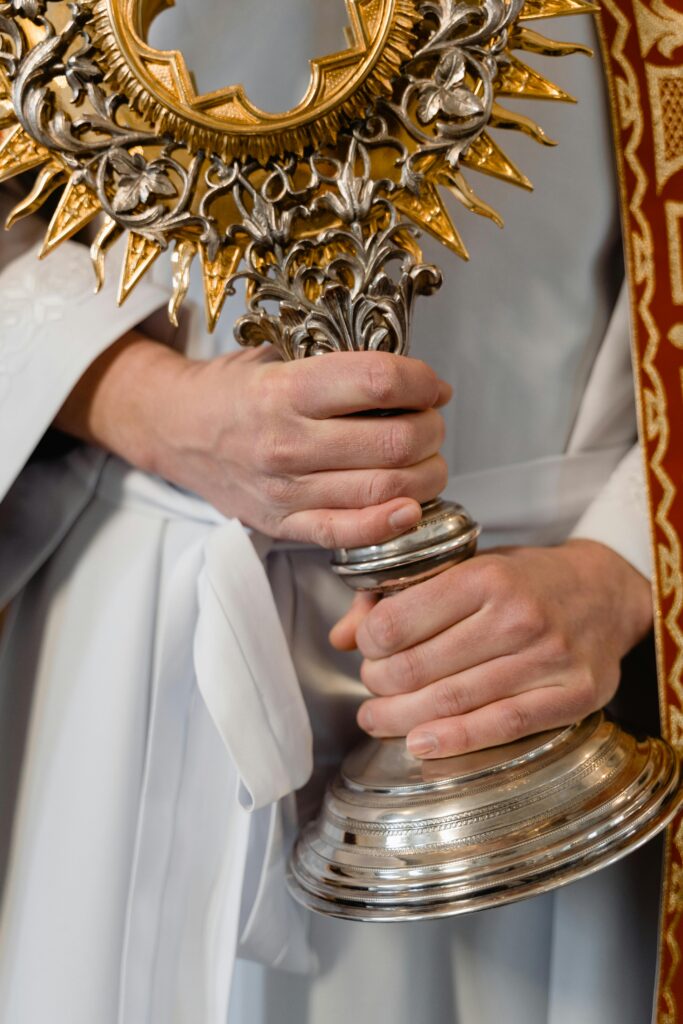
Pope Francis wanted to convene the 53rd International Eucharistic Congress guided by the theme “Fraternity to heal the world”. Prior to this great ecclesial event we met in a theological symposium to delve deeper into the meaning of this expression. However, as the “Basic Document” tells us:
“We thank God that this Eucharistic Congress will take place in the middle of the two general assemblies of the synod of bishops in the Vatican (October 2023 – October 2024), which we see as a prophetic sign of the Eucharistic banquet as the center and maximum expression of synodality”.
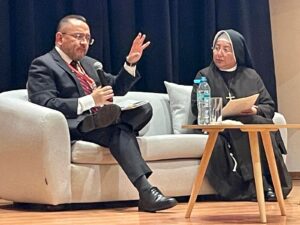 In other words, our reflection is in an ecclesial circumstance that we cannot ignore. Both the International Eucharistic Congress and the theological Symposium that precedes it are immersed in a long-term process. The renewal of the Church, according to the Second Vatican Council, is not the privilege of a few in the Holy See or in some Pontifical University, but the shared responsibility of all over time. In this journey, theological reflection has a unique role: to serve as a reflective and critical moment of the community experience of lived faith. In other words, faith, before being found in a solemn definition, before being found in a book, before delving academically into its content, is the experience of a people in movement that has been called by the Spirit, and that requires expression, that is, to let out that which was contained, and which longed to manifest itself. The Catechism of the Catholic Church already reminded us:
In other words, our reflection is in an ecclesial circumstance that we cannot ignore. Both the International Eucharistic Congress and the theological Symposium that precedes it are immersed in a long-term process. The renewal of the Church, according to the Second Vatican Council, is not the privilege of a few in the Holy See or in some Pontifical University, but the shared responsibility of all over time. In this journey, theological reflection has a unique role: to serve as a reflective and critical moment of the community experience of lived faith. In other words, faith, before being found in a solemn definition, before being found in a book, before delving academically into its content, is the experience of a people in movement that has been called by the Spirit, and that requires expression, that is, to let out that which was contained, and which longed to manifest itself. The Catechism of the Catholic Church already reminded us:
“To believe” is an ecclesial act. The faith of the Church precedes, engenders, leads and nourishes our faith.
To begin in this way, recalling something so elementary, corrects us all. Faith is not an experience of “private life,” merely individual. Faith is a gift that is built in a very special way within our “I.” We discover the certainty of faith, thanks to the “we,” that is, thanks to the community that precedes us. And thus, in the ecclesial “we,” our “I” recognizes itself as a member of an event that surpasses it: God, who is a communion of Persons, enters into History, becomes our Brother, and calls us to live as “God’s People,” that is, as bearers of a Mystery of fraternity that in turn is called to call the entire human race to unity.
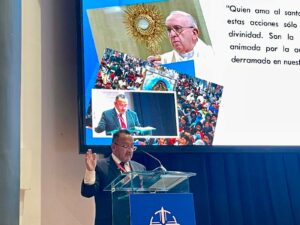 This experience provokes our whole being, including reason. When reason seeks the meaning of these certainties and when the content of these certainties calls upon reason, theology emerges as a sapiential approach to the God who reveals himself. Thus, theology is not primary, but rather constitutes a reflective, critical and, in a certain way, contextual moment, that is, it is a certain “returning”, a certain “questioning” and a certain “noticing” that allows us to approach the meaning of what has already been an experience that surpasses us.
This experience provokes our whole being, including reason. When reason seeks the meaning of these certainties and when the content of these certainties calls upon reason, theology emerges as a sapiential approach to the God who reveals himself. Thus, theology is not primary, but rather constitutes a reflective, critical and, in a certain way, contextual moment, that is, it is a certain “returning”, a certain “questioning” and a certain “noticing” that allows us to approach the meaning of what has already been an experience that surpasses us.
Understanding theology in this way, it is not artificial to formulate the topic that has been requested of us in the following way: “Eucharistic devotions and popular religiosity: a reflection in times of synodality.”
In other words: how should we think about Eucharistic devotions and popular religiosity from the synodal reform of the Church? What light does the ecclesiology of the Second Vatican Council shed on the moment of framing Eucharistic devotions and popular religiosity? Should we continue to see popular religiosity as a certain “minority in the faith”?
The Mystery of the Church is Revealed in its Foundation
First of all, we need to briefly clarify what the Church is, and to do so it is useful to try to understand its foundation. For some time, some people were seduced by Alfred Loisy’s idea of the “invention” of the Church by the post-Easter community. The phrase “Jesus announced the Kingdom of God and what came was the Church” became popular. This expression had been preceded by an entire atmosphere created by Protestant exegesis that tried to show that the Church emerged as a fruit of the faith of the disciples after the Resurrection or as an alternative to the failure of Jesus’ messianic project. In our opinion, the issue is broad and complex and cannot be resolved in a few lines. In fact, the Second Vatican Council, while it is true that it affirms that: “the mystery of the Holy Church is revealed in its foundation,” has not been prolix in speaking about the way in which the Church was founded. There are only three texts that mention the issue in a rather brief manner. I would like to highlight one of them, from Gaudium et Sps, which is, in my opinion, the fundamental one, and from which it is possible to discover an important clue:
Born from the love of the Eternal Father, founded in time by Christ the Redeemer, and gathered in the Holy Spirit, the Church has an eschatological and saving purpose, which it will only be able to fully achieve in the coming century. It is already present here on earth, made up of men, that is, of members of the earthly city who have the vocation to form in the history of the human race the family of the children of God…
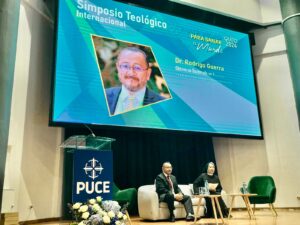 This means that while it is true that the Church is configured as a human and social phenomenon, it cannot be understood except as rooted in the mystery of God, One and Triune. God, in his Mystery, originates and constitutes the Church at all times. If we wish to look for a specific act, of a juridical nature, with which Jesus founded the Church, we will not find it. Precisely this absence is what invites some to think that “ecclesiogenesis” occurs in the Christian community called by the Spirit in response to the Resurrection. However, from our point of view, the question is somewhat more subtle. The person writing here has been greatly helped by the fact that the new People of God cannot be reduced to a merely human institution such as a civil association or a political community. The irreducibility of the Church must be verified in a personal way through immersion in a community of discipleship, taking care of the methodological aspects that allow one to open up to the possibility that the Resurrection may be verified, to some degree, in it. Without this personal immersion, without this belonging, one can study the Church extrinsically, but one will not understand it in its characteristic specificity.
This means that while it is true that the Church is configured as a human and social phenomenon, it cannot be understood except as rooted in the mystery of God, One and Triune. God, in his Mystery, originates and constitutes the Church at all times. If we wish to look for a specific act, of a juridical nature, with which Jesus founded the Church, we will not find it. Precisely this absence is what invites some to think that “ecclesiogenesis” occurs in the Christian community called by the Spirit in response to the Resurrection. However, from our point of view, the question is somewhat more subtle. The person writing here has been greatly helped by the fact that the new People of God cannot be reduced to a merely human institution such as a civil association or a political community. The irreducibility of the Church must be verified in a personal way through immersion in a community of discipleship, taking care of the methodological aspects that allow one to open up to the possibility that the Resurrection may be verified, to some degree, in it. Without this personal immersion, without this belonging, one can study the Church extrinsically, but one will not understand it in its characteristic specificity.
Of course, it also helps to carefully examine the Word of God and discover that the Church is prefigured from the beginning of the world, prepared in the history of the People of Israel and instituted by Jesus Christ through his deeds and words: Jesus Christ reveals the Father, announces the Kingdom, calls the twelve, confers a special ministry on Peter, performs his own Baptism in the Jordan, celebrates the last supper with his disciples, etc.
Now, St. Paul recognizes the assembly of Christians as the Church of God. A group of people from the most diverse backgrounds recognize a new reality thanks to Baptism. Baptism is an immediate connection with Jesus Christ. As baptized people we enter with Christ into the new creation (cf. 2 Cor 5:17). In Galatians 3:26-28 St. Paul states:
“You are all children of God through faith in Christ Jesus, for those who were baptized into Christ have clothed themselves with Christ. There is no longer any distinction between Jew and Greek, slave and free, male and female, for you are all one in Christ Jesus.”
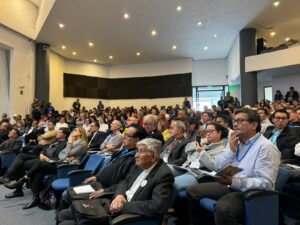
The Trinity in History
This last point is important: we are all one in Christ. The Church is the visible dimension of “being in Christ.” Therefore we should not be surprised that the image of the Church, “the body of Christ,” is closely related to “being one in Christ.” Jesus Christ makes the Church his Body, not through a new hypostatic union, but through the gift of his Spirit. In other words: the preaching and the actions of Jesus, Son of God sent by the Father, institute the Church. The outpouring of the Spirit constitutes it. Father, Son and Spirit are present in the Church, which is like a “mysterious extension of the Trinity in time, which not only prepares us for the unitive life, but also makes us participate in it.”
The result of this immersion of the Trinity in History is an event, an unforeseen and indeducible reality: there exists a sociologically identifiable community in which a Mystery dwells that sustains it. This “sustaining” does not spring from the ethical coherence of the community, but from the undeserved gratuity of a true redemptive act that exceeds us, that is, from an unconditional forgiveness that reconstructs life from above and offers it a new horizon of freedom.
Among the many elements that must be considered in order not to fracture the relationship between Jesus Christ and the Church, and to understand that it is the entire Trinity that is involved in the ecclesial being, in my opinion, it is worth highlighting a detail from the Gospel of St. John that does not appear in the other Gospel accounts. This detail was explored by the Fathers of the Church and is part of the wisdom heritage of the Church itself: in the final moments of the Passion, Jesus’ heart is pierced by a lance. “Immediately there came forth blood and water” (cf. Jn 19:34), St. John tells us. The empirical fact of blood overthrows any formal or abstract way of conceiving Christianity. Docetism is defeated once and for all. Jesus Christ truly died, just as he was truly born and truly resurrected (cf. Jn 20:24, 27). Likewise, from the side of Jesus Christ water flows forth to quench the thirst of the new People of God and give it life. Therefore, the Church is born from the side of Christ through the blood shed for many (Eucharist) and the water that gives us eternal life (Baptism).
Why is it important to point this out? First of all, because, on the one hand, there still exists in some circles a primarily juridical understanding of the Church that is indigestible to thinking more ecclesiologically. Likewise, it is relatively easy to speak of the Church as “communio” and/or as “People of God” without mentioning its Trinitarian foundation. A “communio” without foundation in the Trinity can be a beautiful friendship, but it would lack the dynamic of the love of the divine Persons that is shared in the modesty of the fragile ecclesial “we.” On the other hand, it is also easy to affirm that the Church is founded on baptism, without insisting on the Eucharist or vice versa. Emphasizing baptism can generate sympathy in the Protestant world, while emphasizing the Eucharist can accentuate the role of the ordained ministry, eclipsing – as has so often happened – the fundamental role of the common priesthood. In reality, both Baptism and Eucharist are structuring aspects of “ecclesiogenesis” and not just sacraments that the Church “makes.”
The Church, at its core, is a mystery in which all these elements are integrated. The Church goes back to Jesus Christ in its origin, in the institution of the sacraments and the ministries. The Holy Spirit, for his part, deserves to be recognized, among other things, in all charismatic activity – which is enormous! –, in the unfailing assistance to the Church, to the Pope and to the councils. In this way, the Church will always be renewed from and through the Eucharist, and, in this sense, it has a Christological foundation. For its part, Pneumatology will bring to Ecclesiology the important dimension of “communion.”
The Eucharist makes the Church and the Church makes the Eucharist
How, then, is the relationship established between the body of Christ and the ecclesial community? Can we really affirm that “Ecclesia de Eucharistia vivit?” Saint Paul establishes, through the Lord’s Supper, a close connection between the body of Jesus Christ that “for us” hung on the cross and the ecclesial community described in terms of the “body of Christ.” Among the various Pauline texts that can help us to appreciate this, I highlight one from the First Letter to the Corinthians:
“The cup of blessing, do we not bless it so as to enter into communion (koinonia) with the blood of Christ? And the bread that we break, do we not do so so as to enter into communion (koinonia) with the body of Christ? For if there is one bread and we all partake of that one bread, though we are many, we are all one body” (1 Cor 10:16-17).
The Lord’s Supper is associated with the idea of the Church. “Koinonia” means communion and participation in the one bread that defines the Church as the body of Christ. The Church, in this way, is an assembly. However, it is an assembly that is called to create unity, without excluding. St. Paul already denounced the perverse forms of Eucharistic celebration in which some are privileged, leaving others out (cf. 1 Cor 11:17-34). In other words, celebrating the Eucharist, of course, means consecrating the species of bread and wine, it implies the memorial of the death and Resurrection of Jesus Christ! However, celebrating the Eucharist also means that as a Church we are called to live the greatest unity in charity.
In other words, from my point of view, there has sometimes been a weakening of the bond between the Eucharist and the Church and a development of Eucharistic piety centered one-sidedly on the Real Presence, even though St. Thomas Aquinas clearly states with regard to the Eucharist that “the reality (res) of this sacrament is the unity of the mystical body.” This means that the Eucharist, which is the true real-substantial presence of Jesus Christ, also refers to the unity that we are all called to live in the Church.
In this way we can note that it is true that the Eucharist makes the Church, but also that the Church makes the Eucharist. This circularity should not disturb us. The uniqueness of the Eucharistic Body of the Lord implies the uniqueness of his mystical Body. Eucharist and Church are forms of the sacramental presence of Christ in history. Both depend on, that is, “depend on,” the sacrifice of Jesus Christ on the Cross, which is the event that has absolute ontological priority. Because He loved us first, because Jesus Christ precedes us, we can recognize the Eucharist within the aforementioned circularity as a primary causal phenomenon. And yet, I insist, the Eucharist is not only the real presence of Jesus Christ, but also the source of the mutual interrelation of all the members of the Church and of their peculiar unity.
Synodality as “necessary reciprocity”
Unity comes from the one shared bread and the common baptismal dignity that is realized through relationships of mutual service. St. Paul is very clear in this regard:
“For just as in one body we have many members, and all the members do not have the same function, so we, being many, are one body in Christ, and each member serves the other members” (Rom 12:4-5).
Now, ministerial service is not only complementary, but primarily reciprocal. St. John Chrysostom seems to note the “reciprocity” of each ministerial identity within the Church:
“What is the bread? It is the body of Christ. What are those who receive it transformed into? The body of Christ; but not many bodies, but one body. For just as the bread is one, even though it is composed of many grains of wheat and these are found in it, even though they are not seen, so that their diversity disappears by virtue of their perfect fusion; in the same way, we too are reciprocally united to one another and, all together, to Christ.”
But the Constitution Lumen gentium goes further. The reciprocity of each member of the Church is necessary:
“Even though some, by the will of Christ, have been constituted doctors, dispensers of the mysteries and pastors for the others, there is a true equality among all as to the dignity and the action common to all the faithful in order to build up the Body of Christ. The distinction that the Lord established between the sacred ministers and the rest of the People of God entails solidarity, since the Pastors and the other faithful are linked to each other by reciprocal need. (…) In this way, all will bear multiple witness to the admirable unity in the Body of Christ.”
It is wonderful to grasp the freshness and simplicity of this powerful text. There is no room for exclusion in the Church, because each christifideles needs the other to fulfill his or her own vocation. This relational fabric, this “reciprocal need,” constitutes the identity of each ministry. In other words, each Christian faithful is defined within the one Body of Christ by the service he or she renders to others.
In the celebration of the Eucharist this is especially evident:
“The sacrament of the Eucharist is, in fact, the place par excellence of the New Covenant between the Trinity and humanity, the place of the admirable exchange between the offering of the Son of God pro nobis, through which he brings all humanity to the Father; “an offering that the Father accepts and to which He responds by pouring out abundantly the Spirit of Love in Eucharistic communion. This then builds the communio sanctorum in the gathered ecclesial community. In short, through the mediation of the ministers who perform the sacrament and through the offering of the baptized who unite and participate in the Offering of Christ, the Church is constituted in its sacramental reality as the Body of Christ that proceeds from the Eucharistic Body, as well as in its identity as the Bride of the Lord who lives from the permanent reception in her bosom of the fruitfulness of the divine-human Bridegroom.”
In this way, in the Church, each one of us is a christifideles, and that is fundamental. The ministerial diversifications that may subsequently arise are part of the vocational journey of each person who helps to build the body of Christ: ministries that are built from a reality that is prior and that must be considered the most decisive. This is the experience of the early Christian community that the Second Vatican Council re-proposed in Lumen gentium. The diversity of the members of the Church – bishops, priests, lay people, consecrated persons – not only expresses a plurality of histories and vocations, but also the dynamic relationality that co-constitutes the identity of each and everyone. For this reason, the expression “mutual need” is called, in my opinion, to open the perspective that is properly synodal, that is, of dynamic communion, in which not only “we walk together,” but through each one with the same dignity, the Church manifests itself in a type of unity that transcends the merely hierarchical and that privileges the importance of the common priesthood of all the faithful.
Rafael Luciani acutely points out:
“The relationship that exists between the faithful is not utilitarian or functional, but constitutive and constituent, that is, it reconfigures their identities and relational modes (…) Therefore, each one, suo modo et pro sua parte (LG 31), gives himself to the other in order to be, making it possible for the other to be.”
This means that the Church, conceived primarily as a hierarchical structure, which is articulated from the top down, is a deficient figure in the light of the experience of the Church in apostolic times or in the light of the ecclesiology of the Second Vatican Council. We are all christifideles: from the Pope to the most recently baptized baby. We all enjoy the same dignity. We are all co-responsible. It is in the light of the notion of the “People of God” that we must interpret the hierarchical dimension of the Church and the ordained ministry, not vice versa. Moreover, it is the light of the notion of the “People of God” that allows us to reconsider Eucharistic devotions and popular religiosity with a new nuance.
A brief history of Eucharistic devotions
Eucharistic devotions have a long history in the Church. Let us briefly look at how they emerged. During the first centuries, in the context of various persecutions, and in the absence of churches, the Eucharistic species were kept privately to be distributed among the sick, prisoners and those who were unable to attend the Lord’s Supper. As the persecutions eased, the reservation of the Eucharistic species took on increasingly solemn forms. Towards the 5th century, the species were taken to a “sacrarium” and in the 6th century it was mandated that the place be eminent, honest and have a permanently lit lamp. These and other measures are mainly to express veneration and faith in the real presence. However, there is still no cult of the real Presence.
During the Mass, at that same time, the faithful make various bows and prostrations. Later, in the Eucharistic liturgy, the Cistercian custom of elevating the host and the chalice after the consecration will spread, arousing interior and exterior adoration among the faithful. In the 9th and 11th centuries, various heretical movements that denied the real presence forced the Church to reinforce the doctrine on the presence of Christ in soul and body, as man and as God, in the Eucharist. In the 11th century, Lanfranc, archbishop of Canterbury, established a procession with the Blessed Sacrament on Palm Sunday. In that same century, during the controversies with Berengarius, in some Benedictine monasteries the custom of genuflecting before the Blessed Sacrament and incensing it arose. In fact, the individual devotion of going to pray before the tabernacle has a historical precedent in the “monument” of Holy Thursday from the 11th century onwards.
Saint Francis of Assisi, Saint Clare and Saint Juliana of Mont-Cornillon promoted the devout life before the tabernacle. This last saint, moreover, received the inspiration to create a feast on the body and blood of Christ. Pope Urban IV would eventually approve the feast for the entire Church, although at first there was relative opposition. It was not until the 14th century that both dioceses and orders would welcome the celebration throughout the Church.
The celebration of Corpus Christi already involved a solemn procession in the 13th century, in which a travelling exposition of the Sacrament was carried out. And from this other processions with the Blessed Sacrament were derived, for example, to bless the fields, to carry out certain prayers, etc. On the other hand, this palpable, visible presence of God, this immediacy of his presence, a singular object of adoration, produced a very notable impact on the Western Christian mentality and introduced new forms of piety, demanding new rituals and creating the corresponding pious literature. In the 14th century, solemn expositions were already practiced and blessed with the Blessed Sacrament. This is the time when altars and chapels of the Blessed Sacrament were created.
The major expositions were introduced in the 15th century. At first, the Sacrament was placed on the altar and adored in silence. Little by little, a ritual of these adorations developed, with their own songs, which united Eucharistic devotion with Marian devotion. The exposition of the Blessed Sacrament was so enthusiastically welcomed by the people that by 1500 many churches were practising it every Sunday, normally after the prayer of Vespers. Custom, and also most rituals, prescribe kneeling in the presence of the Blessed Sacrament. In the beginning, the Blessed Sacrament was kept veiled both in processions and in Eucharistic expositions. But custom and Church discipline already in the 14th century provided for the exposition of the body of Christ “in cristallo” or “in pixide cristalina”.
Likewise, the Confraternities of the Blessed Sacrament were born, some of which developed before the feast of Corpus Christi. The Confraternity of the Grey Penitents in Avignon began in 1226, in order to make amends for the sacrileges of the Albigensians. With various names and modalities, the Eucharistic Confraternities spread in the 13th century throughout most of Europe. These Confraternities ensure Eucharistic adoration, reparation for offenses and contempt against the Sacrament, the accompaniment of the Blessed Sacrament when it is carried to the sick or in procession, the care of the altars and chapels of the Blessed Sacrament.
In the 16th century, the brotherhoods centered on the Eucharist greatly influenced the Christian people. Some, like the Company of the Blessed Sacrament, founded in Paris in 1630, came to form complete schools of spiritual life for the laity. In the following centuries, Eucharistic associations and works multiplied: the Guard of Honor, the Holy Hour, priestly Thursdays, the Eucharistic Crusade or the nocturnal Adoration. Likewise, very diverse communities of consecrated life dedicated mainly or partially to adoration arose.
The worship of the Eucharist outside of Mass finally became part of the common piety of the Christian people. Many faithful practice daily visits to the Blessed Sacrament. In parishes, the Holy Hour, the daily or weekly exposition of the Blessed Sacrament, for example on Eucharistic Thursdays, is common, along with the rosary. In some dioceses, chapels of perpetual adoration and expiatory temples are promoted, where the exposition of the Blessed Sacrament is daily. In addition, the devotional roots of visits to the Blessed Sacrament can be seen in the abundant pious literature that it generates.
We cannot fail to mention that towards the end of the 19th century, on the initiative of Emile Tamisier, Eucharistic Congresses arose, which, whether at a national, regional or international level, are particularly important experiences of promoting Eucharistic devotion. In the 20th century, St. Pius X will be remembered for granting indulgences to those who look piously at the elevated host, saying “My Lord and my God.”
The evangelizing and catechetical challenge regarding Eucharistic devotions
This brief account has no other purpose than to show that Eucharistic devotions have accompanied the life of the Church for many centuries. The People of God have embraced and promoted them, and on many occasions they accompany other practices of popular religiosity such as pilgrimages or visits to shrines.
It is not excessive to recognize that at times Eucharistic devotions seem not to be linked to the communion dimension of Christian life. However, in regions such as Latin America, this is compensated by other factors that make these devotions a strong aid for the Christian life of many faithful and even for the discovery of the community dimension of faith. How many of us discover ourselves as “People”, true “People of God”, for example, when walking for many days on a pilgrimage to a Shrine!
Of course, the evangelizing and catechetical challenge will always be to promote in Eucharistic piety outside of the Mass, a vision that encompasses Eucharistic and ecclesial communion simultaneously. On the other hand, this challenge is also true for the Holy Mass, which in some places can incredibly become a ritual practice without sufficient ecclesial references. I immediately think of the recent intervention of Cardinal Christophe Pierre, Apostolic Nuncio to the United States, at the last National Eucharistic Congress in that country:
“The power of God comes to us in the Eucharist. But we cannot be agents of the power of God if we insist on seeing the same thing, thinking the same thing, and controlling the gifts of God. This is the worst. We pretend to be the masters of the game. We have to let ourselves be possessed by the Spirit of God, and go where the Spirit leads us. Let us be honest. We, all of us, are afraid to go where the Spirit leads us. Isn’t that right? Perhaps this should be the main fruit of the Eucharistic renaissance.”
These and other words of Cardinal Pierre are a charitable aid to those who have difficulty living in a reconciled communion, to those who prefer to opt for ideological sides, to those who do not embrace everyone ecclesially but only some, to those who seek to experience a “Eucharistic revival” but are unable to link it to a more affective and effective adherence to the Successor of Peter and to the need for the Church to renew itself synodally. Eucharistic adoration with participation in the Church, Eucharistic devotion without full communion with the Successor of Peter, Eucharistic celebration, but outside of synodality, are experiments that harm the true nature of the Eucharist. This would merit further explanation, but with what has been said it seems to me that the essential idea is clear.
In the same way, in recent times, some new forms of Eucharistic adoration in some countries, when carried out outside of churches, seem to carry the risk of dissociating the act of adoration from the rest of liturgical life, something that the Church has long recommended avoiding. As in all nascent ecclesial experiences, the necessary maturation and patient accompaniment will be necessary so that this and any other risk are properly addressed.
Now, Eucharistic devotions sometimes intersect tacitly or explicitly with various forms of popular religiosity. For this reason, it is necessary now to speak about the way in which the Church has matured its understanding of popular religiosity.
Popular religiosity, popular spirituality
In the Church too there has been a gradual maturation regarding the meaning of popular religiosity. It is not possible here to make a global history of this beautiful dimension of the Christian experience. I would simply like to emphasize that it is clear that the experience of the Latin American Church has been a key factor in the new awareness of the positive role played by the many ways in which our people spontaneously live the faith. Moreover, I dare say that this is not outside the process of synodal renewal. The way in which the ecclesiology of the People of God has been received in Latin America after the Council has gradually allowed us to understand with greater simplicity and depth that God, One and Triune, precedes us and goes before us both on a personal and community level, generating motions, impulses, initiatives, forms of expression and celebration that truly sanctify people and allow – not without difficulties – the intergenerational transmission of faith.
Pope Francis tells us in this regard:
“To understand this reality, it is necessary to approach it with the gaze of the Good Shepherd, who does not seek to judge but to love. Only from the natural affective connection that love gives can we appreciate the theological life present in the piety of Christian peoples, especially in their poor. I think of the firm faith of those mothers at the bedside of their sick child who cling to a rosary even though they do not know how to string together the propositions of the Creed, or of so much hope poured out in a candle that is lit in a humble home to ask Mary for help, or of those glances of deep love at the crucified Christ. Whoever loves the holy faithful People of God cannot see these actions only as a natural search for divinity. They are the manifestation of a theological life animated by the action of the Holy Spirit who has been poured into our hearts (cf. Rom 5:5).”
And he adds, in a text that is crucial to the topic at hand:
“Popular piety is a theological place, that is, a place that authoritatively shows us relevant aspects of the truths of faith. René Laurentin and Hans Urs von Balthasar, each in their own language, had already taught us that the life of the Church, the life of the faithful and the saints, are a source that announces the existence and the message of Jesus Christ in a peculiar way. This, transferred to our context, implies that those who live the experience of popular piety and discover themselves within it, become instances of witness to the revealed truth. In other words, popular piety does not only contain “seeds of the Word” – as the bishops said in Medellín (1968) – but “fruits” of the Word of God in the hearts of people and communities – as we recognized in Aparecida (2007) –. That is why it is not artificial to speak of “popular spirituality” because it is the Spirit who sanctifies life through the symbols, prayers, songs and pilgrimages that mark the lives of many members of our peoples, even today.”
“The multiple forms of this religiosity in Latin America resist the secularizing understandings of social life and history. This is one of the many signs that allow us to understand that Latin America has its own specificity in its social and cultural dynamics. Specificity that cannot be fully explained from models of social interpretation constructed in other latitudes. In effect, the theories of secularization and the theologies that were in some way inspired by them, find in popular piety a counterpoint that should help them to correct and reformulate themselves. To a certain extent, the pastoral failure of the ideologized forms of liberation theology can be explained precisely here: Marxism, to be true, should run parallel to a process of increasing secularization. On the contrary, the poor people of Latin America often experience pain and exclusion through a unique spiritual experience that gives them hope and moves them to fraternity and the fight for justice, especially in times of grave urgency or emergency.
This spiritual and popular experience, which includes pilgrimages to sanctuaries, Marian piety, devotion to various saints, silent prayers in the face of life’s trials, and many other spontaneous gestures by our simplest people, contributes to the formation of personal and community conscience. I understand well that certain elites may find this observation a little strange. However, there is nothing more instructive in this regard than pastoral care with the poorest. In friendship with the poor, in close and supportive service to them, peculiar truths are revealed that strengthen faith and make us love our peoples and their respective histories more deeply.”
I am of the opinion that Pope Francis, as Pastor of the Universal Church, today takes up the long reflective journey on popular religiosity in Latin America and, with due discernment, re-proposes it for the Universal Church.
In this process, the V General Conference of the Latin American Episcopate played a fundamental role. The bishops said in this important document “popular piety is a legitimate way of living the faith, a way of feeling part of the Church, and a way of being missionaries.” The risk is in despising it, or “considering it a secondary way of Christian life.” This spirituality is “an expression of supernatural wisdom,” lived by people who have very little of what is known as religious instruction, but “it is not less spiritual for that, but it is so in another way.” Because “the wisdom of love does not depend directly on the enlightenment of the mind, but on the internal action of grace.”
In other words: the Church, as the People of God on the move, today manages to identify that the theological action of God goes beyond the spaces of liturgical celebration and becomes popular devotion and popular spirituality.
All the prudent warnings about the need to evangelize and catechize the religious experience of the people on the move are surely pertinent. The important thing is that they do not imply in a tacit or explicit way an enlightened, rationalist understanding of faith, in which walking with the people, singing with them, celebrating the gospel in the streets and squares, or praying silently in front of a tabernacle, means a primitive form of God’s action in the human soul, a mere folklorism or an inferior way of living the faith proper to the poor.
The rationality that permeates Latin American popular spirituality contradicts that of the enlightened. In many places, the Enlightenment fractured the religiosity of the Creole oligarchies with respect to the profound religious experience that was brewing and continues to brew in the popular segments, many of them mestizos and indigenous, of Latin America. This resulted in a certain disdain, a certain distance, a certain prevention on the part of some elites who look with a certain moral superiority at popular religiosity as if it were a rudimentary, eclectic, un-Christian form of living the faith.
However, when the Church lives experiences of communion, participation and active mission in a synodal key, the view is clarified by the presence of the living faith of the people that rejuvenates everyone. It is the People of God, especially the most humiliated and marginalized, who often show us with simplicity today that the Spirit blows where it wants and that the strength of ecclesial renewal – properly synodal – is based on the maturation of our immersion in Christ in Baptism and in the Eucharist.
In this way, Eucharistic devotions and popular spirituality are two aspects of the purifying pedagogy that God himself gives us today to live with greater depth the wonder before the Mystery. Without this wonder, perhaps typical of children, it is very difficult to allow things to change in one’s own life, in ecclesial life and in social life.
Yes, Eucharistic devotions and popular spirituality are today part of the path that we need to rediscover in order to better appreciate the meaning of the Presence of Jesus Christ in the Eucharist, in the heart of a synodal Church, which is called to be a credible sign of a fraternity without borders.
Related

Reflection by Bishop Enrique Díaz: Alleluia, alleluia
Enrique Díaz
20 April, 2025
5 min

Christ is Risen! Alleluia! Commentary by Fr. Jorge Miró
Jorge Miró
20 April, 2025
3 min
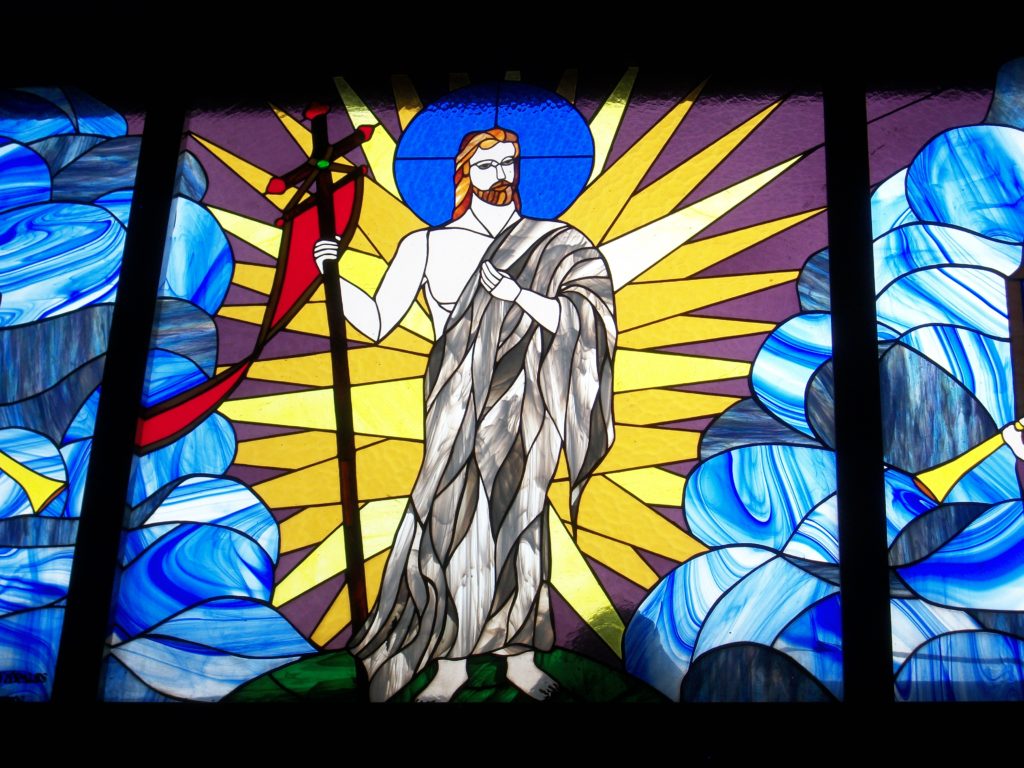
Easter: Mystery of Freedom
Carlos J. Gallardo
20 April, 2025
5 min
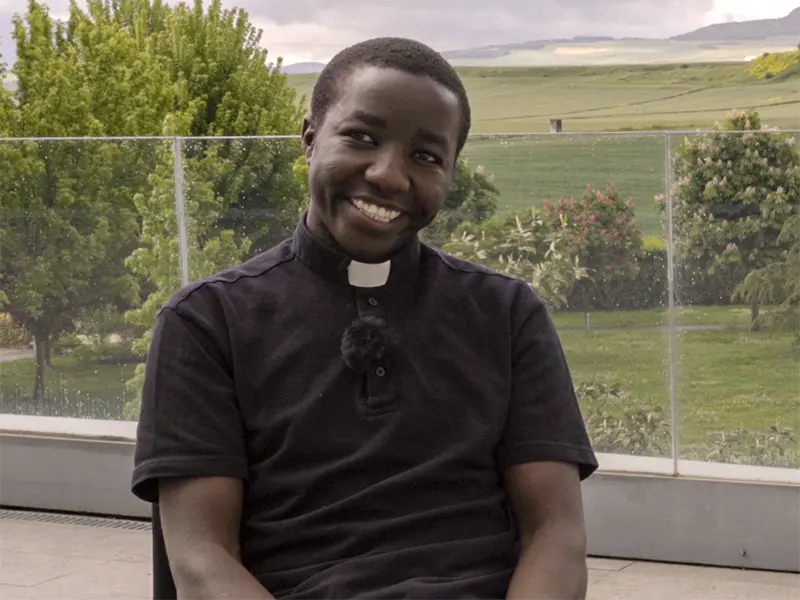
“Being Catholic in Tanzania is a source of pride”
Fundación CARF
16 April, 2025
6 min
 (EN)
(EN)
 (ES)
(ES)
 (IT)
(IT)

